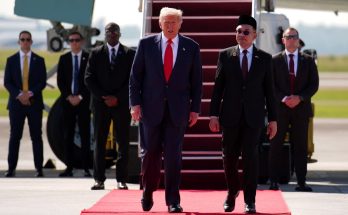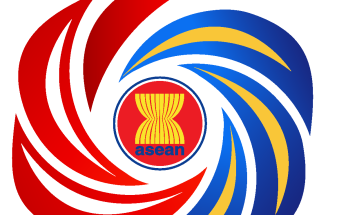 Amid frenzied jubilation and merry-making, India’s 29th state, Telangana, was formally born June 2, marking a culmination of over five decades of sustained struggle for statehood.
Amid frenzied jubilation and merry-making, India’s 29th state, Telangana, was formally born June 2, marking a culmination of over five decades of sustained struggle for statehood.
K Chandrasekhar Rao (KCR), whose party Telangana Rashtra Samithi spearheaded the decades-long campaign for a separate state to be carved from Andhra Pradesh, was sworn in as the chief minister of Telangana.
A jubilant Rao, popularly known as KCR, vowed to make Telangana “a role model for other states in India.”
The two states will share the governor and the IT poster city, Hyderabad, among other things, even after the division. The high-tech capital, which figures on the itinerary of many visiting foreign leaders, will be shared by the two for a decade and Governor ESL Narasimhan will continue to hold the position for a period set by the president.
This is the first time when India will have two Telugu-speaking states. It all goes back to the 1950s when demands were made for the first time to merge the two states. In 1953, the States Reorganization Committee had advised against merging the two states. However, three years later, the merger did take place on November 1, 1956. In 1968, the demand for a separate state took the form of a movement which culminated in the birth of the 29th state of India.
Prime Minister Narendra Modi welcomed the new-born state by tweeting, “India gets a new state! We welcome Telangana as our 29th state. Telangana will add strength to our development journey in the coming years.” Recounting the struggle that paved the way to this day, he said, “Telangana’s birth comes after years of struggle and sacrifices by several people. We pay our respects to them.”
Separation Plan: Who gets what?
A fter the split, Telangana will retain iconic heritage sites such as Charminar and several other monuments that have stood witness to history and time. Andhra Pradesh, on the other hand, will be the sole receiver of almost Rs 2,500 crore (around 400 million USD) of annual dakshina (devotees’ offerings) coming its way from the myriad temples rooted in its soil for years. The Tirupati temple alone boasts of around 30 million USD in offerings.
fter the split, Telangana will retain iconic heritage sites such as Charminar and several other monuments that have stood witness to history and time. Andhra Pradesh, on the other hand, will be the sole receiver of almost Rs 2,500 crore (around 400 million USD) of annual dakshina (devotees’ offerings) coming its way from the myriad temples rooted in its soil for years. The Tirupati temple alone boasts of around 30 million USD in offerings.
Likewise, natural resources have also been split between the two states — 45% of the forest area has been allotted to Telangana whilst Andhra Pradesh will have a 970-km long coastline to itself. This implies that major and minor ports like Vishakhapatnam Port Trust, Gangavaram and Krishnapatnam will form the gateway of trade for Andhra Pradesh. However, Telangana will not be held back because it can utilise the existing world-class infrastructure like the international airport, HiTec city and the Outer Ring Road.
In the education sector, while Andhra Pradesh will retain the old, state-owned Andhra University, Telangana will have newer educational institutions like Indian School of Business, IIT (Medak), NIFT, JNTU and Hyderabad Central University.
The Road Ahead
 After a five-decade long battle for a separate state, it might seem like a new dawn has broken for the people of the two states. But not everybody is happy. The number of those who are alienated because of the decision to split Andhhra Pradesh into two states is almost as large as those who have been pleased and placated. The bureaucrats, who have been expressing their displeasure at the notion of having a separate state from the very beginning, now want to split the bureaucratic positions on the basis of region.
After a five-decade long battle for a separate state, it might seem like a new dawn has broken for the people of the two states. But not everybody is happy. The number of those who are alienated because of the decision to split Andhhra Pradesh into two states is almost as large as those who have been pleased and placated. The bureaucrats, who have been expressing their displeasure at the notion of having a separate state from the very beginning, now want to split the bureaucratic positions on the basis of region.
A legislation was passed in India’s Parliament, backed by the BJP and Congress, in February 2014 to carve out Telangana from Andhra Pradesh. The decision triggered vehement opposition and partisan debates.
The task ahead for both the states and their chief ministers is truly gigantic, but hopefully they will now sort out their differences to shepherd their states’ separate but twinned destinies. The 2014 general elections in Andhra Pradesh was fought and won over the issue of Telangana. In the next general elections however, promises alone will not suffice.
Looking ahead, K Chandrasekhar Rao has struck a positive note saying welfare and development would be the two driving forces of his government. “People of Telangana are looking forward for a progressive and development-oriented state. We will work in that direction and ensure a transparent administration. We will make Telangana a model state in the country in all respects,” KCR said to applause from the crowds gathered at a ceremonial parade to mark the Telangana formation day at the Parade Grounds in Secunderabad. He also assured that the Telangana government would maintain cordial relationship not only with the Centre but also neighbouring states. It’s not just the inhabitants of Telangana, but the people in India will be closely watching and hoping that the new chief minister lives up to his development-and- harmony mantra.
Author Profile
- India Writes Network (www.indiawrites.org) is an emerging think tank and a media-publishing company focused on international affairs & the India Story. Centre for Global India Insights is the research arm of India Writes Network. To subscribe to India and the World, write to editor@indiawrites.org. A venture of TGII Media Private Limited, a leading media, publishing and consultancy company, IWN has carved a niche for balanced and exhaustive reporting and analysis of international affairs. Eminent personalities, politicians, diplomats, authors, strategy gurus and news-makers have contributed to India Writes Network, as also “India and the World,” a magazine focused on global affairs.
Latest entries
 DiplomacyOctober 4, 2025UNGA Resolution 2758 Must Not Be Distorted, One-China Principle Brooks No Challenge
DiplomacyOctober 4, 2025UNGA Resolution 2758 Must Not Be Distorted, One-China Principle Brooks No Challenge India and the WorldJuly 26, 2025MPs, diplomats laud Operation Sindoor, call for national unity to combat Pakistan-sponsored terror
India and the WorldJuly 26, 2025MPs, diplomats laud Operation Sindoor, call for national unity to combat Pakistan-sponsored terror India and the WorldJuly 25, 2025When Fire Ends, Diplomacy Begins
India and the WorldJuly 25, 2025When Fire Ends, Diplomacy Begins India and the WorldJuly 16, 2025Operation Sindoor and its Aftermath: India’s Successful Diplomatic Outreach
India and the WorldJuly 16, 2025Operation Sindoor and its Aftermath: India’s Successful Diplomatic Outreach







